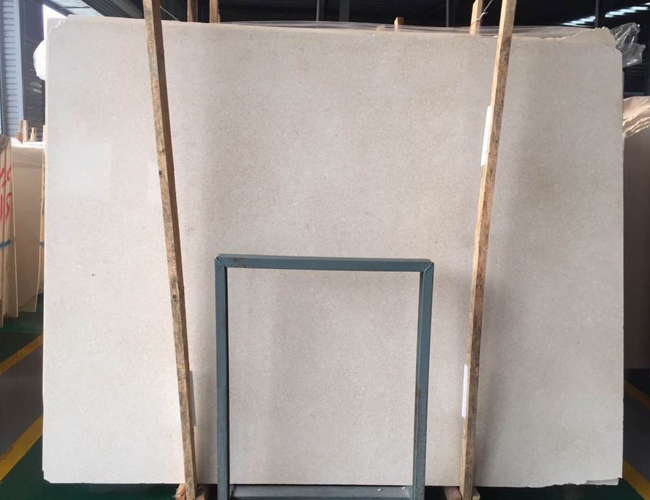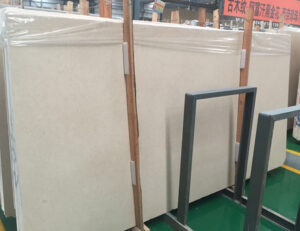Galala marble, with its gentle, calming tones and fine veining, creates an air of understated elegance and sophistication from its very appearance. Marble of the Galala kind, which is derived from the well-known quarries of Egypt, has been highly regarded for generations due to its enduring beauty and extraordinary adaptability. However, what precisely are the hues that are associated with Galala marble, and what distinguishes it from other types of marble products? Within the scope of this all-encompassing investigation, we set out on a quest to discover the enticing hues and features of Galala marble. We also delve into its origins, aesthetic attributes, and lasting appeal.

First, we will discuss the geological formation of Galala Marble and its origins.
Known as Galala marble, this particular kind of limestone marble is largely extracted from quarries located in the Galala Mountain area of Egypt, which is situated on the coast of the Red Sea. Galala marble is recognized for its one-of-a-kind geological composition and unusual hues. It was formed over the course of millions of years via the buildup of sea sediments and the subsequent compression and crystallization of limestone. The geological processes that produced the Galala Mountain area endowed the marble with a rich palette of subtle colors, ranging from creamy whites to soft beiges and warm grays. This palette of delicate hues is influenced by the Galala Mountain region.
Colors and Varieties of Galala Marble are Discussed in Part Two
Galala marble is distinguished by its hues, which are defined by their gentle, neutral tones and subtle veining patterns. These characteristics give the stone a feeling of elegance and refinement that is sure to stand the test of time. The Galala marble is characterized by a range of hues, the most prominent of which are creamy whites, soft beiges, and warm grays. The strength and tone of these colors may vary depending on the particular quarry and the geological circumstances. It is possible to achieve a spectrum of veining in Galala marble, from tiny wisps to powerful, sweeping strokes, which gives the surface of the stone a sense of depth and dimension.
Galala marble comes in a number of different varieties, including Galala Classic, Galala Extra, and Galala Beige. Each of these varieties has its own distinctive color palette and veining features. Galala Extra’s backdrop is a warmer beige color with delicate caramel veining, whilst Galala Classic’s background is a creamy white color with a hint of gray veining. Galala Beige, on the other hand, has a foundation that is a little lighter beige color and veining that is a combination of gray and taupe, which results in an appearance that is classy and subtle.

Applications and uses of Galala Marble are discussed in Part III.
Because of its classic elegance and adaptability, Galala marble is a material that is often selected for use in a broad variety of decorative and architectural applications. Galala marble is a material that can be used to provide an air of elegance and refinement to any environment. It can be used for everything from sumptuous worktops and attractive flooring to magnificent columns and complex sculptures. The material’s gentle, neutral tones and delicate veining make it an excellent choice for both conventional and modern design styles. As a result, it enables interior designers and architects to create spaces that are both timeless and attractive.
The Care and Maintenance of Galala Marble is Covered in Part IV
In order to maintain the beauty and durability of Galala marble, it is necessary to provide it with the appropriate care and maintenance. The Galala marble surface, like all other natural stone surfaces, is vulnerable to staining and etching from acidic liquids. Because of this, it is essential to protect the surface on a regular basis and clean up any spills as soon as they occur. In order to avoid scratching or otherwise damaging the surface of the marble, you should avoid using aggressive cleaning products or abrasive materials. Galala marble has the potential to keep its shine and beauty for many years to come if it is kept in good condition and properly maintained.
Section V: Ethical Sourcing and Environmental Responsibility
The extraction and manufacturing of Galala marble, like the extraction and production of any other natural resource, raises crucial considerations concerning the ethical and sustainable sourcing of the material. Responsible quarrying techniques, environmental stewardship, and fair labor policies are all very important factors that should be taken into account by both businesses and consumers. Customers have the opportunity to guarantee that Galala marble will continue to be enjoyed for years to come by providing support to businesses that place a priority on ethical sourcing and sustainability. This will also help to reduce the effect that Galala marble has on the environment and society.

A Celebration of the Everlasting Elegance of Galala Marble, Part VI: Conclusion
In conclusion, Galala marble is a tribute to the everlasting beauty and enduring attraction of natural stone via its eternal beauty and appeal. Galala marble continues to fascinate and inspire fans all over the world, from its beginnings in the Galala Mountain area of Egypt to its appearance in some of the most famous architectural masterpieces seen all over the world. Galala marble is a stone that exemplifies the perfect marriage of the beauty of nature and the workmanship of humans. Its hues are gentle and neutral, and it showcases delicate veining and subtle elegance. Galala marble continues to be seen as a sign of wealth, elegance, and eternal sophistication, regardless of whether it is used to decorate the flooring of magnificent palaces or the interiors of contemporary housing.






